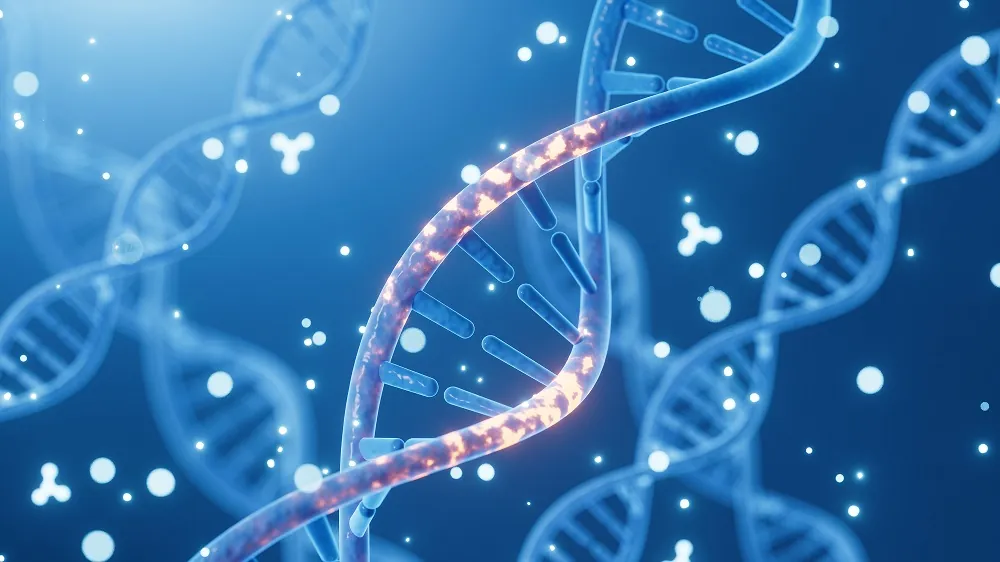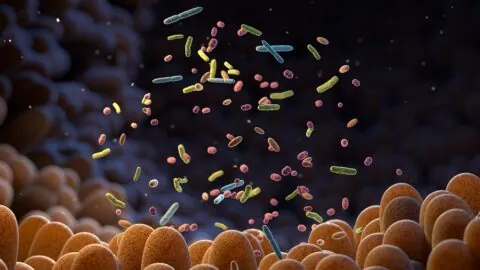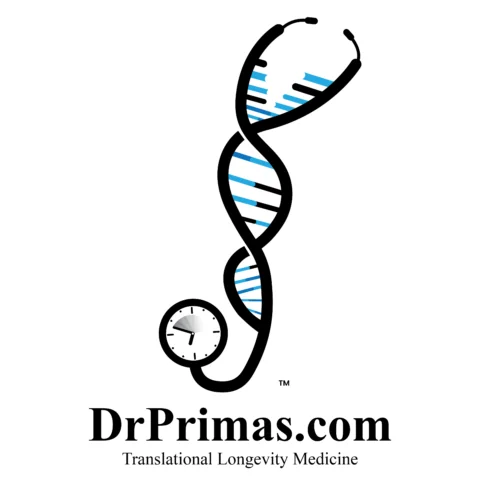July 07, 2025
The longevity field hasn’t been very good at naming things, but one notable exception is “inflammaging”: the low-grade chronic inflammation that correlates with aging. Recognition has been growing that inflammation, the ubiquitous reaction of the immune system to various stressors, is a major driver of many age-related diseases and possibly one of the limiting factors...
June 11, 2025
In a recent study that included data from humans, mice, and cell culture experiments, researchers demonstrated that gut microbes and their metabolites can profoundly influence the senescence of endothelial cells. They also explored the molecular processes underlying these changes [1]. Senescence in the blood vessels Endothelial cells line the inner surfaces of blood vessels, and...
May 15, 2025
The Hallmarks of Aging team has returned to Cell, publishing a detailed review discussing how future methods of dealing with aging might be highly personalized. Two more hallmarks? In the original and very heavily cited 2013 paper [1], Dr. López-Otín and colleagues outlined nine hallmarks of aging. In their 2023 update [2], three more were...
May 07, 2025
In a recent study, lifelong, repeated microbiota transfer from young mice to old mice improves intestinal permeability, coordinative ability, and metabolic profiles while reducing pro-inflammatory responses [1]. Small in size, but mighty in impact Previous research has found that the composition and function of gut microbes (microbiota) changes as we age. These changes are linked...
May 01, 2025
While computer technology continues to accelerate, human beings still have to contend with age-related disease and death. Here's some of what's been done to support longer, healthier lives in April. A Lifespan.io Project Bears Fruit Results of a Crowdfunded One-Year Human Rapamycin Trial: In Aging, Dr. Sajid Zalzala and his team have published the results...
April 14, 2025
In Aging, Dr. Sajid Zalzala and his team have published the results of Participatory Evaluation of Aging with Rapamycin for Longevity (PEARL), a randomized, controlled human clinical trial that was crowdfunded by Lifespan.io. Crowdfunded research bears fruit Rapamycin: Benefits, Side Effects, and ResearchRapamycin is a macrolide, a class of antibiotic and it exhibits potent antitumor...
March 24, 2025
Like many people, I’m both wary of and intrigued by people who make bombastic claims. Years in the longevity field have taught me caution but also that big claims are not necessarily outlandish, and few people make bigger claims than Joshua “Scotch” McClure, founder and CEO of Maxwell Biosciences. The company developed Claromers™, synthetic small...
February 12, 2025
A new study dives into a human-derived probiotic cocktail meant to protect against Alzheimer’s disease. The treatment improves gut health and reduces inflammation in mice [1]. The earlier, the better Early interventions to prevent or delay Alzheimer's disease might be a more feasible approach than reversing the disease when it is fully developed. However, such...
February 03, 2025
As rejuvenation research advances from theory to practice, more therapies start making their way into the clinic. 2025 continues with both mouse experiments and human clinical trials. Interviews Cyclarity Launches Human Trial to Cure Atherosclerosis: Recently, Cyclarity Therapeutics announced the launch of a Phase 1 human clinical trial for a drug that aims to remove...
January 15, 2025
A recent study linked probiotic-induced gut microbiome and metabolite changes to improved muscle functioning in older sarcopenia patients [1]. Sarcopenia and the gut Sarcopenia is an age-related condition. People with sarcopenia suffer from a reduction in muscle mass, strength, and function, leading to a decreased quality of life and increased morbidity and mortality [2]. The...
No Pages Found.
No Community Members Found.
No Aggregator Articles Found.
August 12, 2021
Dr. Primas is a board-certified internist, a preventive medicine and integrative medicine specialist, and always on the cutting edge of medicine. He guides his patients using genomics, epigenetics, methylation testing (aging clock), microbiome analysis and telomere length analysis for a more detailed, personal approach to their health. He firmly believes that this approach not only...
June 03, 2020
The Jean Mayer USDA Human Nutrition Research Center on Aging (HNRCA) located at Tufts University, located in Boston, MA, is an important aging research hub with a particular focus on nutrition, the microbiome, and sarcopenia.
December 05, 2019
Amazentis is a life science company developing therapeutic nutrition products. Their products include Mitopure, a proprietary form of Urolithin A. Urolithin A is the end product created when bacteria in the gut break down ellagitannins, which are polyphenols found in fruits such as pomegranates, strawberries, walnuts, and raspberries. The substance does not appear naturally in...

Why We Age: Dysbiosis
In youth, the human gut is buzzing with a mix of helpful microbes working in harmony. With aging, however, that harmony fades, replaced with inflammation-stirring bugs that happily sip on your bile acids. This slide is so consistent that López-Otín and colleagues upgraded “dysbiosis” from bit player to full-fledged hallmark, grouping it with chronic inflammation at the “integrative” tier of aging biology.
Read More
Read More

Why We Age: Chronic Inflammation
Chronic inflammation refers to a persistent, low-grade buzz of immune activity that settles into the body without the drama of an infection or obvious injury. In the world of aging, this slow, smoldering fire is often called inflammaging, a term coined by Claudio Franceschi to capture the systemic, hard-to-detect inflammation that creeps in with advancing years.
Read More
Read More

Urolithin A: The Promise and Reality of a Gut Metabolite
Urolithins are not found in food; however, their precursor polyphenols are. Urolithin A can naturally be derived from the plant polyphenols ellagic acid and ellagitannins. Various tissues contain urolithin A, so it has been proposed to affect multiple organ systems in worms, cells, mice, and humans. In particular, there is significant cell, animal and human data supporting the idea that urolithin A increases mitophagy.
Read More
Read More

Why We Age: Epigenetic Alterations
Epigenetic alterations are age-related changes in gene expression that harm the fundamental functions of cells and increase the risk of cancer and other age-related diseases. One of the proposed reasons we age is the changes to gene expression that our cells experience as we get older; these are commonly called epigenetic alterations. These alterations harm the fundamental functions of our cells and can increase the risk of cancer and other age-related diseases.
Read More
Read More

How Metabolic Syndrome Makes Aging Worse
Metabolic syndrome drives many of the hallmarks of aging, and different hallmarks of aging drive metabolic syndrome in a vicious, accelerating cycle. Central obesity, high triglycerides, low HDL cholesterol, high blood pressure, and elevated fasting glucose comprise a cluster of metabolic disorders that increase the risk of cardiovascular disease and type 2 diabetes and define metabolic syndrome.
Read More
Read More

Urea Is a Blood Biomarker of Aging
In chronic kidney disease, damaged kidneys cause the accumulation of urea by slowing down its elimination. Recent evidence suggests that urea is a potent toxin with multiple systemic effects. The body makes proteins by bonding together long chains of amino acids. When the body has an excess of protein, is in the process of turning over cellular proteins, or has a deficit of available carbohydrate or fat to meet its energy needs, it activates the urea cycle.
Read More
Read More



















